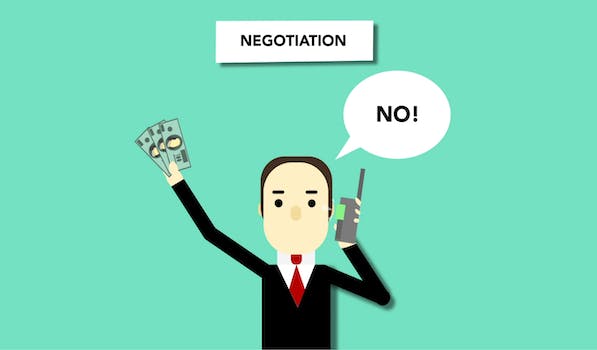How To Start A Business And Be Successful
“From idea to success: A step-by-step guide to launching your own business.”
Introduction
Starting a business can be a challenging and rewarding experience. It requires careful planning, hard work, and dedication to succeed. In this article, we will discuss some key steps to help you start a business and be successful. Whether you are starting a small business or a large corporation, these tips will help you lay a solid foundation for your business and increase your chances of success.
Identifying Your Niche Market
Starting a business can be a daunting task, but with the right mindset and approach, it can also be a rewarding and fulfilling experience. One of the most important steps in starting a business is identifying your niche market. This means finding a specific area of the market that you can cater to and excel in. In this article, we will discuss how to identify your niche market and how to use this knowledge to build a successful business.
The first step in identifying your niche market is to do your research. This means understanding the market you want to enter and the needs of your potential customers. You can start by looking at your competitors and analyzing their strengths and weaknesses. This will give you an idea of what areas of the market are already saturated and where there may be gaps that you can fill.
Once you have a good understanding of the market, you can start to think about your own strengths and interests. What are you passionate about? What skills do you have that could be valuable in this market? By combining your own strengths and interests with the needs of the market, you can start to identify potential niche areas.
Another important factor to consider when identifying your niche market is your target audience. Who are your potential customers? What are their needs and desires? By understanding your target audience, you can tailor your products or services to meet their specific needs and stand out from your competitors.
It’s also important to consider the size of your niche market. While it’s important to find a specific area of the market to focus on, you don’t want to choose a niche that is too small or too niche. You need to ensure that there is enough demand for your products or services to make your business viable.
Once you have identified your niche market, it’s important to test your ideas and validate your assumptions. This means talking to potential customers, conducting surveys, and testing your products or services in a small-scale setting. This will help you to refine your ideas and ensure that there is a demand for what you are offering.
Once you have validated your ideas, it’s time to start building your business. This means developing a business plan, creating a brand, and marketing your products or services to your target audience. It’s important to stay focused on your niche market and to continue to refine your offerings based on customer feedback and market trends.
In conclusion, identifying your niche market is a crucial step in starting a successful business. By doing your research, understanding your target audience, and testing your ideas, you can find a specific area of the market to focus on and build a business that meets the needs of your customers. Remember to stay focused on your niche market and to continue to refine your offerings based on customer feedback and market trends. With the right approach and mindset, you can start a business and be successful in your chosen niche.
Creating a Business Plan

Starting a business can be an exciting and rewarding experience, but it can also be overwhelming and challenging. One of the most important steps in starting a business is creating a business plan. A business plan is a written document that outlines your business goals, strategies, and financial projections. It serves as a roadmap for your business and helps you stay focused on your objectives.
The first step in creating a business plan is to define your business idea. What product or service will you offer? Who is your target market? What makes your business unique? These are all important questions to consider when defining your business idea. Once you have a clear understanding of your business idea, you can start to develop your business plan.
The next step is to conduct market research. This involves gathering information about your target market, competitors, and industry trends. You can use this information to identify opportunities and challenges in the market, and to develop strategies to address them. Market research can also help you determine pricing, marketing, and distribution strategies.
Once you have completed your market research, you can start to develop your business strategy. This involves outlining your business goals, objectives, and strategies for achieving them. Your business strategy should be based on your market research and should be tailored to your specific business idea and target market.
Financial projections are also an important part of your business plan. This involves estimating your startup costs, revenue, and expenses for the first few years of your business. You can use this information to determine how much funding you will need to start your business, and to develop a plan for managing your finances.
In addition to these key components, your business plan should also include an executive summary, company description, marketing and sales strategy, and management and organizational structure. These sections provide a comprehensive overview of your business and help investors and lenders understand your business idea and potential for success.
When writing your business plan, it is important to be clear and concise. Use simple language and avoid technical jargon. Your business plan should be easy to read and understand, and should be organized in a logical and coherent manner.
Once you have completed your business plan, it is important to review and revise it regularly. Your business plan should be a living document that evolves as your business grows and changes. Regularly reviewing and updating your business plan can help you stay on track and make informed decisions about your business.
In conclusion, creating a business plan is an essential step in starting a successful business. It helps you define your business idea, conduct market research, develop a business strategy, and estimate your financial projections. A well-written business plan can also help you secure funding and attract investors. By following these tips and guidelines, you can create a comprehensive and effective business plan that sets you on the path to success.
Securing Funding and Resources
Starting a business can be an exciting and rewarding experience, but it can also be a daunting task. One of the biggest challenges that entrepreneurs face is securing funding and resources to get their business off the ground. In this article, we will discuss some tips on how to secure funding and resources for your business and increase your chances of success.
The first step in securing funding and resources is to have a solid business plan. A business plan is a document that outlines your business goals, strategies, and financial projections. It is essential to have a well-written business plan as it will help you to convince potential investors or lenders that your business is worth investing in. Your business plan should include a detailed description of your products or services, target market, competition, marketing strategies, and financial projections.
Once you have a solid business plan, the next step is to identify potential sources of funding. There are several options available, including loans, grants, and equity financing. Loans are a popular option for small businesses, and they can be obtained from banks, credit unions, or online lenders. Grants are another option, and they are typically offered by government agencies or non-profit organizations. Equity financing involves selling a portion of your business to investors in exchange for funding.
When seeking funding, it is important to do your research and identify the best option for your business. Each option has its pros and cons, and you should consider factors such as interest rates, repayment terms, and the amount of funding available. You should also be prepared to provide detailed financial information and projections to potential lenders or investors.
In addition to funding, it is also important to secure the necessary resources to start and run your business. This includes equipment, supplies, and office space. Depending on the nature of your business, you may need to purchase specialized equipment or lease a commercial space. It is important to budget for these expenses and identify the most cost-effective options.
One way to save money on resources is to consider alternative options. For example, you may be able to purchase used equipment or lease a shared office space. You can also consider outsourcing certain tasks, such as accounting or marketing, to freelancers or contractors. This can help you to save money on overhead costs and focus on growing your business.
Another important aspect of securing resources is to build a strong network of contacts. This includes suppliers, vendors, and other businesses in your industry. By building relationships with these contacts, you can gain access to valuable resources and information. You can also learn from their experiences and avoid common pitfalls.
In conclusion, securing funding and resources is a critical step in starting a successful business. It requires careful planning, research, and networking. By following these tips, you can increase your chances of securing the funding and resources you need to start and grow your business. Remember to stay focused on your goals and be persistent in your efforts. With hard work and determination, you can turn your business idea into a thriving enterprise.
Building a Strong Brand Identity
Starting a business can be an exciting and rewarding experience, but it can also be challenging. One of the most important aspects of building a successful business is creating a strong brand identity. Your brand identity is what sets you apart from your competitors and helps you connect with your target audience. In this article, we will discuss some tips on how to build a strong brand identity for your business.
The first step in building a strong brand identity is to define your brand. This involves identifying your target audience, understanding their needs and preferences, and determining what sets your business apart from your competitors. Once you have a clear understanding of your brand, you can start developing your brand identity.
One of the most important elements of your brand identity is your logo. Your logo should be simple, memorable, and reflective of your brand. It should also be versatile enough to be used across different platforms, such as your website, social media, and marketing materials.
Another important aspect of your brand identity is your brand voice. Your brand voice is the tone and style of your communication with your audience. It should be consistent across all your marketing materials and reflect your brand personality. For example, if your brand is fun and playful, your brand voice should be lighthearted and humorous.
Your brand identity should also include your brand colors and typography. Your brand colors should be consistent across all your marketing materials and reflect your brand personality. Your typography should be easy to read and consistent across all your marketing materials.
Once you have developed your brand identity, it is important to communicate it effectively to your target audience. This involves creating a strong brand message that resonates with your audience and using it consistently across all your marketing materials.
One effective way to communicate your brand message is through storytelling. By telling your brand story, you can connect with your audience on an emotional level and build a strong relationship with them. Your brand story should be authentic, engaging, and reflective of your brand personality.
Another effective way to communicate your brand message is through social media. Social media platforms such as Facebook, Twitter, and Instagram provide a great opportunity to connect with your audience and build your brand identity. You can use social media to share your brand story, engage with your audience, and promote your products or services.
In addition to social media, you can also use other marketing channels such as email marketing, content marketing, and advertising to communicate your brand message. It is important to use a consistent brand voice and visual identity across all your marketing channels to build a strong brand identity.
In conclusion, building a strong brand identity is essential for the success of your business. It involves defining your brand, developing your brand identity, and communicating your brand message effectively to your target audience. By following these tips, you can create a strong brand identity that sets you apart from your competitors and helps you connect with your audience.
Developing Effective Marketing Strategies
Starting a business can be a daunting task, but with the right marketing strategies, you can set yourself up for success. Developing effective marketing strategies is crucial to the success of any business, regardless of its size or industry. In this article, we will discuss some tips on how to develop effective marketing strategies that will help you grow your business and achieve your goals.
The first step in developing effective marketing strategies is to identify your target audience. Who are your ideal customers? What are their needs and wants? What are their pain points? Once you have a clear understanding of your target audience, you can tailor your marketing messages and tactics to resonate with them.
Next, you need to establish your unique selling proposition (USP). What sets your business apart from your competitors? What value do you offer that they don’t? Your USP should be clear, concise, and compelling. It should communicate the benefits of your products or services and why customers should choose you over your competitors.
Once you have identified your target audience and established your USP, it’s time to develop your marketing mix. This includes the four Ps of marketing: product, price, place, and promotion. Your product should meet the needs and wants of your target audience, and your price should be competitive and reflect the value you offer. Your place refers to where you sell your products or services, whether it’s online or in a physical location. Finally, your promotion includes all the tactics you use to reach and engage your target audience, such as advertising, social media, email marketing, and content marketing.
One effective marketing strategy is to leverage the power of social media. Social media platforms like Facebook, Twitter, and Instagram offer a cost-effective way to reach and engage your target audience. You can use social media to share valuable content, promote your products or services, and interact with your customers. By building a strong social media presence, you can increase brand awareness, drive traffic to your website, and generate leads and sales.
Another effective marketing strategy is to focus on content marketing. Content marketing involves creating and sharing valuable content that educates, entertains, or inspires your target audience. This can include blog posts, videos, infographics, podcasts, and more. By providing valuable content, you can establish yourself as a thought leader in your industry, build trust with your audience, and attract new customers.
Email marketing is another powerful marketing strategy that can help you grow your business. By building an email list of subscribers who are interested in your products or services, you can send targeted messages that drive traffic to your website, promote your products or services, and generate sales. Email marketing is also a great way to nurture relationships with your customers and keep them engaged with your brand.
In conclusion, developing effective marketing strategies is essential to the success of any business. By identifying your target audience, establishing your USP, and developing your marketing mix, you can create a powerful marketing strategy that drives traffic, generates leads, and increases sales. By leveraging the power of social media, content marketing, and email marketing, you can build a strong brand and grow your business over time. With the right marketing strategies in place, you can achieve your goals and take your business to the next level.
Conclusion
Starting a business can be a challenging and rewarding experience. To be successful, it is important to have a clear vision, a solid business plan, and a willingness to adapt and learn from mistakes. It is also crucial to have a strong work ethic, a passion for your product or service, and a commitment to providing excellent customer service. With dedication and perseverance, anyone can start a successful business.




